New York with Les Nubians
Les Nubians are Hélène and Célia Faussart, the grammy-nominated French-Chad sister duo who have worked with everybody from Talib Kweli and Mos Def to Manu Dibango and The Roots. The doyennes of Afropean culture gave Johny Pitts a guided tour of their adoptive home of New York.
Photos & Text By Johny Pitts
It’s the type of sunny Saturday afternoon in Brooklyn that black diaspora dreams are made of. Elegant terraces of Bed-Stuy Brownstones seem to resemble elderly African American faces; ashy, aged, wise, proud. The streets they watch are colourful cliches that seem to reaffirm everything I hoped existed in this part of the world. I am walking through the literal film set of Do The Right Thing. Growing up as a mixed-race child in Britain, watching that movie through the rose-tinted glass of Spike Lee’s red camera filter, I never realised his flagship joint was closer to social realism than super-stylised Hip-Hopera. These streets really are maroon and mahogany. There really are little girls playing hopscotch on baby-pastel coloured squares drawn in chalk across the street. An old man really is cycling past playing Sam Cooke through a boombox balanced in his front basket, competing with Hip-Hop some younger brothers playing ball are listening to. They jibe each other with court-banter in ebonics that have colonised the world.

More giant African American faces – this time murals of Malcolm X, Biggie Smalls, Ol’ Dirty Bastard. I take a left on Marcus Garvey Boulevard and see sunflower yellow fire hydrants that look almost ripe. They will bare the fruit of fun and water fights soon. Despite my Dad being born and raised here it is my first time in Bedford-Stuyvesant and I sense him on these streets. His sense of style, attitude, humour and culture are almost embedded in the buildings. As solid as buildings. Black America is live and in full effect… if also – as evidenced by recent events – under threat.
But now it is time to double check that my culture exists. I’m in Bed-Stuy to meet the queens of my tribe. The Afropean pioneers who managed to take African, European and American influences and construct a coherent concoction that, for the first time to my young eyes in the late ‘90s, seemed natural instead of niche. Whole instead of ‘half-caste’. I am about to meet Hélène and Célia Faussart, the sisters we know as Les Nubians.
Bedford Stuyvesant
I arrive at the steps of one of the Brownstones, where a dimpled vintage 1970s BMW the colour of orange peel is parked. I walk up the steps, breathe in and press the doorbell. I’m greeted at the door by that face, the one I usually see dotted with Afro-futuristic make-up and shrouded in African headdress. Hélène is the older of the two sisters and, welcoming me in with a friendly smile, oozes warmth and wisdom. She is dressed casually in jeans and a loose-fitting cotton shirt, her honey-gold hair tied up, but bursting out in front with a frizzy fringe swept to one side.
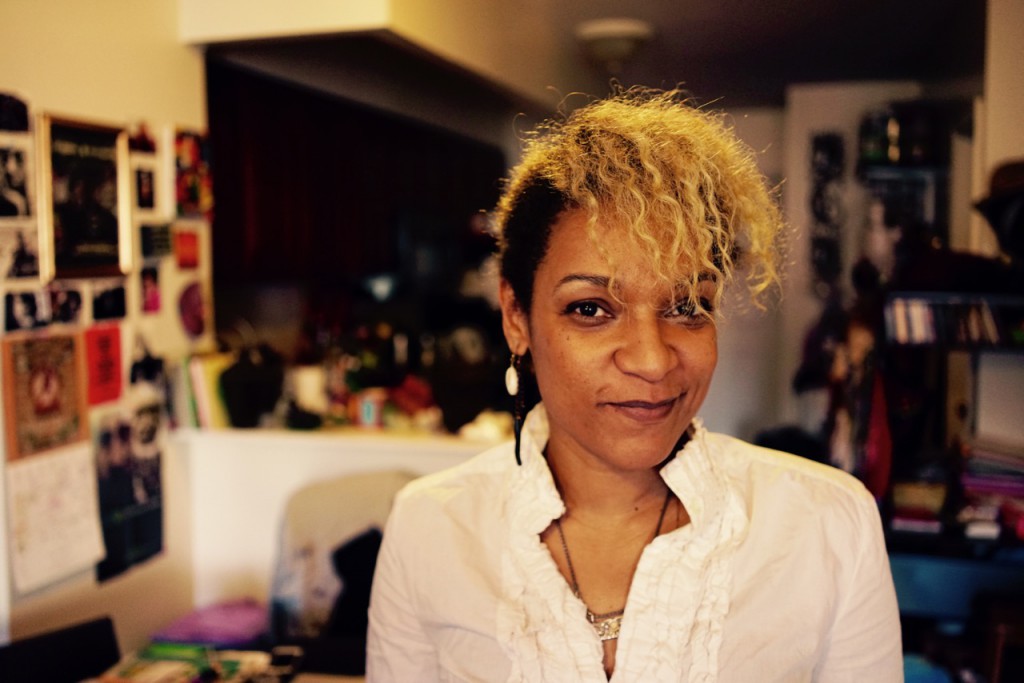
As relaxed as she’s dressed, Hélène also has that French thing of looking effortlessly elegant. She gives me a wry smile and says in a French accent tinged with a little Brooklyn “This may be a strange thing to say, but it is really refreshing to see you are a black guy”. I’m proud to say that Les Nubians are readers of our humble journal, but Helene’s comment came on the back of bad experiences with a white-controlled French press determined to stamp her with reductive labels. “We left France because they just didn’t know what to do with us, they couldn’t handle us.”
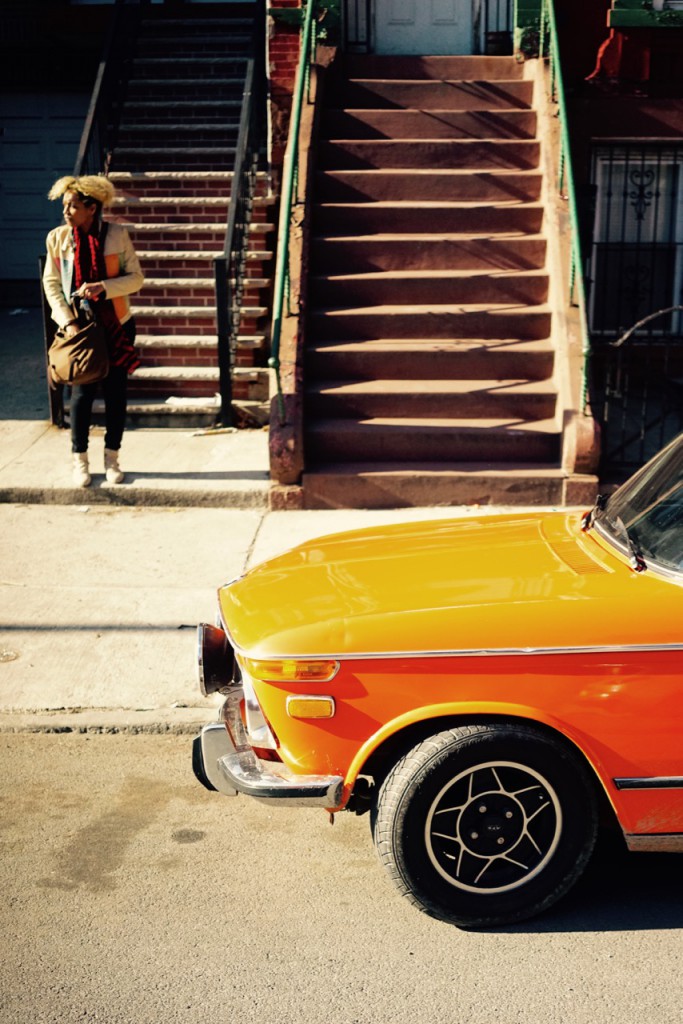
Hélène welcomes me into her home and I ask for an example. “Well they used to talk about ‘la black musique’. They would actually use the English word but we said no, if you want to say we are making black music then take ownership, use the French word for ‘black’ and call it ‘la musique noire’. They really didn’t like that. France hates to recognise race, and yet they were okay to call us black in another language.” I immediately feel as though I’ve known her for years.
When I get inside Hélène’s apartment, it too feels strangely familiar. Something about the African carvings jutting out of abundant plant-life. Something about the subtle scent of incense mingling with a muskier, deeper tone of marijuana and photographs of family that cross continents; images of Africa, Europe and America share wall space. It is earthy, creative, tactile and conjures up a vibe not too dissimilar to Erykah Badu’s music video for Other Side of The Game. It reminds me of my sister’s apartment. It reminds me of my brother’s apartment too. More than anything though, it reminds me of…Les Nubians! That’s when I realise why they are so important to me – they captured these diasporic smells, images and journeys in their music, and transmitted it to the rest of the Afro-European diaspora and beyond as a sort of call to the diaspora. Even if the bohemian Afropean aesthetic didn’t resonate as much at the time, when I heard their first album ‘Princesses Nubians’ as a teenager it had a deeply connective quality. It said “there are black people in France too, who are trying to make sense of being both black and European. More than that – we black Europeans who are completely unapologetic about being so!”
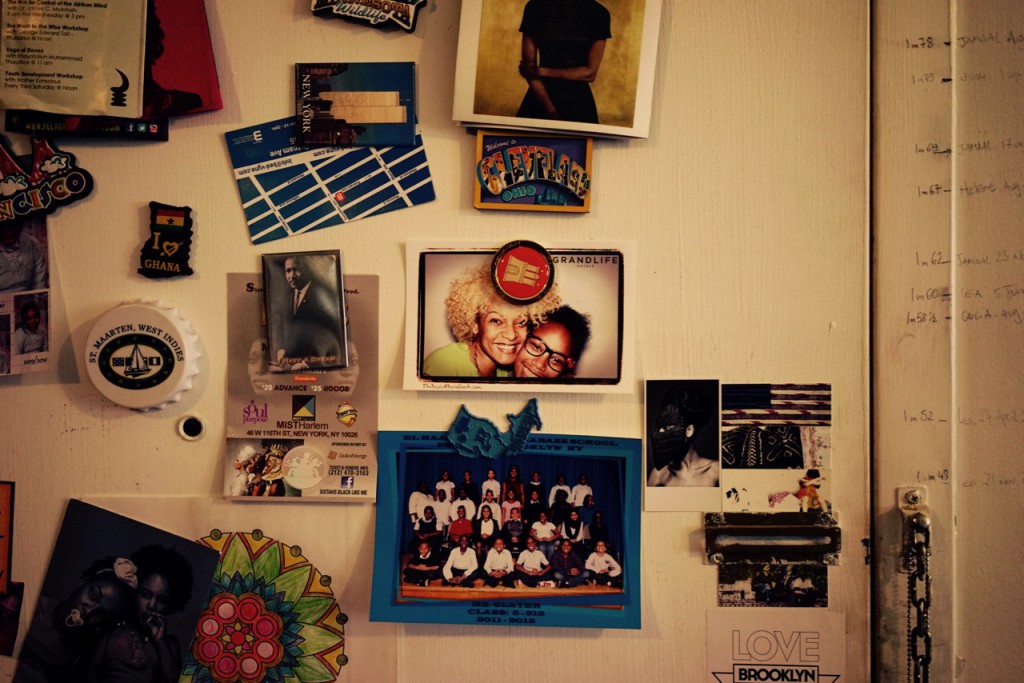
Two things. Firstly, why choose Brooklyn as their new home? Secondly, where is the second Nubian!?
“Brooklyn was just a really easy and obvious move for us. Unlike Europe, New York is a place that hasn’t forgotten it was built by immigrants, so it immediately felt like home. Plus Erykah Badu and Talib Kweli live in Bed-Stuy, they’re our neighbours, so this whole place was really opened up to us from the start. I moved out here ten years ago, and my sister came out three years later…Célia is sorry she can’t be here, but she’s going to meet us at the club later.”
https://www.youtube.com/watch?v=foICj8_vdgo
Speaking to Hélène over a Moroccan mint tea (with honey) I was surprised at the level of autonomy the sisters had. Their voices, style and looks are presented as a completely coherent unit under the ‘Les Nubians’ entity, but they are certainly their own people: Helene is the laidback but conscientious older sister, and organises my entire weekend with them to perfection. Célia is a little more flighty, appearing at junctions like a beautiful mirage for debates and dancing, then vanishing into the nighttime. Both are charming and powerful.
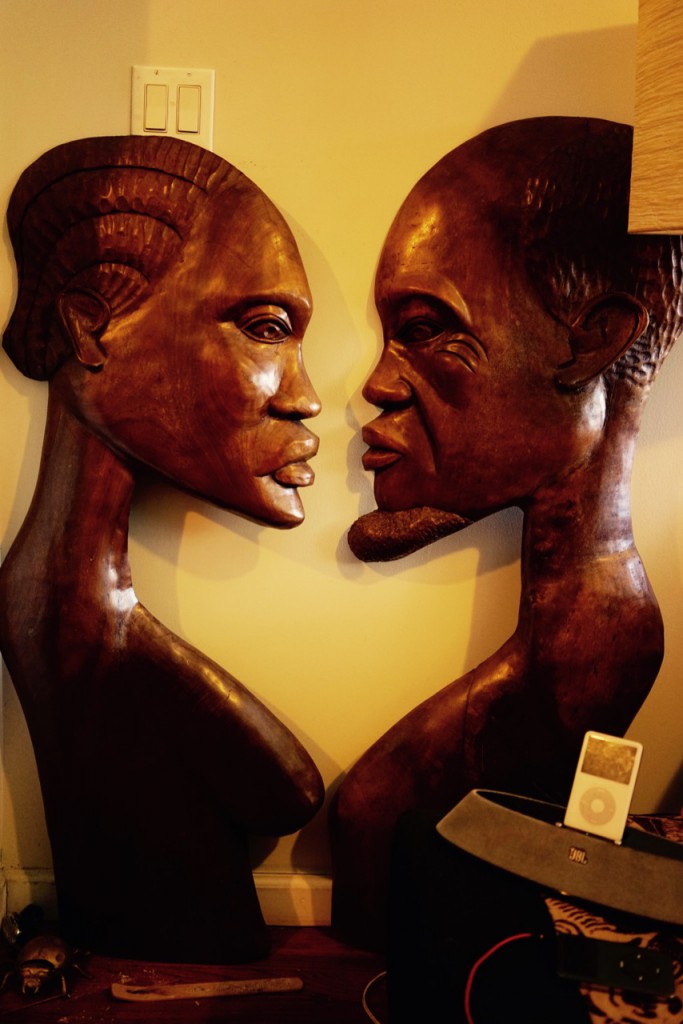
Earlier in the week, before meeting them, I went incognito to their ‘Mo ‘Fro Mondays’ residency at The Brooklyn Bowl which, rather than being a run-of-the-mill gig, is more a full evening of entertainment, where Les Nubians perform some songs and then invite friends and fellow artists to explore a certain theme. Their first theme earlier in the year was ‘Amour: A Celebration of Black History and Love’ (Julie Dexter swung by and killed it apparently). The theme I was treated to was all about ‘soul music, travel and tongues’, the girls being accompanied by French jazz vocalist Marie Martin, Dallas soulster Geno Young (the guy who wrote one of my favourite Erykah Badu songs ‘Times A Wasting’) and yoga teacher-come-singer-songwriter King Aswad.
The evening brought home the idea of Les Nubians as more than a musical act, but rather culture creators who have cultivated an entire mini-universe based on their travels and influences. There was a small stall at the venue selling ‘Nu-Organics’, a series of organic moisturisers developed by Helene and crafted specifically for skin with more melanin. They contain ingredients such as raw African honey, Shea butter, black and raw palm tree oil and cinnamon leaf, and I was assured by the assistant at the stall a pot would change my life – that scars I’d had for years would miraculously disappear if I used the stuff. I don’t want this to sound like a cheap bit of PR, and I haven’t received any money from Les Nubians to say this, but in only a week I’d noticed my poor, vitamin D deprived, acid-rain-stained pale black-British skin was glowing in a way I’d never seen it glow before.
https://www.youtube.com/watch?v=9pjtQIQ2hmE
On the way to meet Célia at a rooftop party on the Lower East Side, Hélène describes how she sources the ingredients for her magic Afropean potions. “Of course France has a long history of master perfumiers, but Africa has a lot of the active ingredients I use, as well as Asia. Gingko Biloba for instance has so many health benefits and even survived the Hiroshima atomic bomb, budding at ground zero without any deformities afterwards. Really, though, the creams work exactly the same as my music. I’ve always said that my favourite part of the creative process with Les Nubians is the mix… you have all of these instruments, but you have so many different ways to put them together – you can make some prominent and others subtle – the same song can sound like a completely different creation with each mix. That’s what I do with my skin products – I take things from across the globe that I’ve found work for me, and then play around, trial and error until I’ve found just the right balance…”
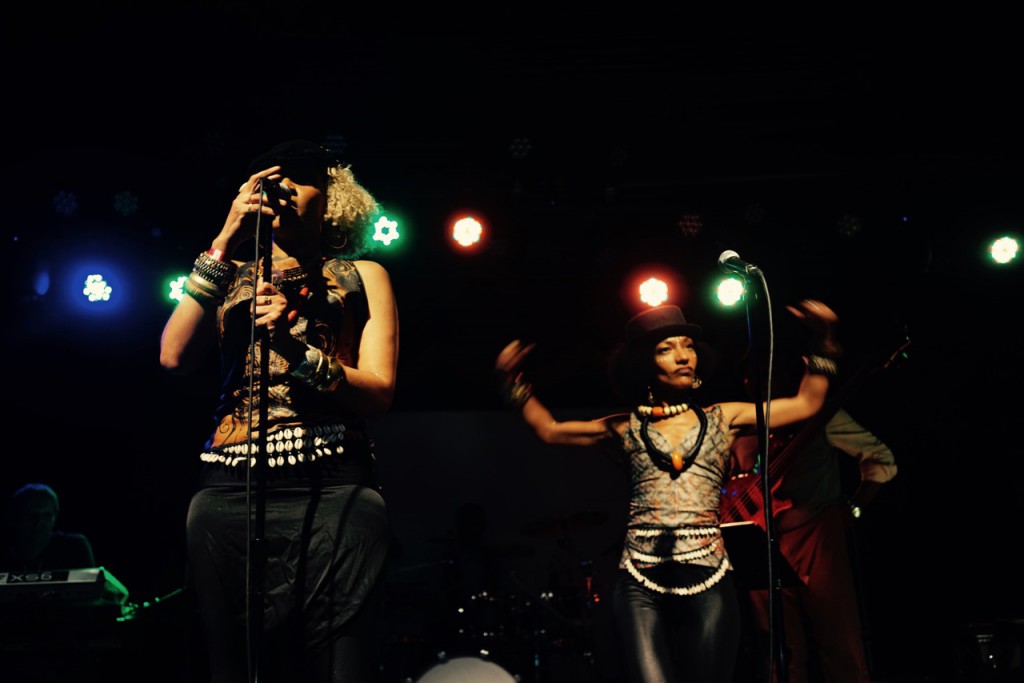
The Lower East Side
We get on the subway and head to the Lower East Side for one of the legendary ‘Everyday People’ parties at a bar and restaurant called The DL. The party is an all-dayer, starting at 2 and finishing at 11, and was set up by a celebrity chef called Roblé to offer a high quality brunch, usually aimed at corporate types, to a more arty crowd. When we arrive two huge bouncers are sending a long line of people home because the venue is full, but Hélène sails in, taking me with her, and we go upstairs to an open air bar filled with possibly the highest concentration of beautiful people I’ve ever seen. When I say beautiful it isn’t just the look, but the vibe. It is the type of atmosphere other cities try to create, but end up simply becoming a place for hipsters – standing and standoffish. Here the style is all there; there are thick rimmed glasses, nose piercings, tattoos, dudes with afros and girls with skinheads, but everyone is getting down in the way only New Yorkers seem to be able to.

When I say New Yorkers I’m including Raissa, a young woman I met who was born in the Ivory Coast, raised in France and is now living in Brooklyn, and is part of the Afrofuturism Team who set up debates about black identity. I’m also talking about Soukenna Roussi, a French model and fashion stylist who runs the zeit-geisty Gods Magazine and Devi, the graffiti artist from London who is part of the legendary DDS crew. Dapper Afrika is the life and soul, reminding me of our generation’s Fab Five Freddy…or perhaps Basquiat. “I was born and raised in New York, but I’m not a New Yorker,” he tells me. “I’m a human being from planet earth.” It seems being a human being from planet earth, albeit one with an open attitude, is all it takes to be a New Yorker. The city is the invisible third person, and every beautiful body bathed in the late afternoon sun sandwiched on the rooftop is being allowed to take part and create a collective New York identity.

The sun is setting and Hélène and I are getting tipsy, due to that fact we’re stocking up every time we finally get to the understaffed bar. Hélène is not a diva at all, but we are welcomed into the VIP area and the crowd is hip enough to clock on to who she is. It’s not that she is getting asked for autographs – Les Nubians are not celebrities who inspire crazed, creepy fandom. But there are silent glances of recognition and appreciation. Les Nubians were there. There when Maxwell was hanging out in urban hang suites, D’Angelo was playing around with Voodoo and Erykah had us all believing in Baduism. I told myself I wouldn’t ask the question, but I’m on my third tequila and I can’t help it. I bring up that Neo-Soul thing.
My pet gripe is that I felt artists shut down a really credible movement. Raphael Saadiq once looked at me with utter disgust when I introduced him as ‘One of the Godfathers of Neo-Soul’ in an interview I did with him back in the day. D’angelo said he ‘pleads the fifth [amendment]’ when he was asked what he thought of the title, and Erykah Badu said she doesn’t even know what it is. You know, Erykah, that thing with the Fender Rhodes keys that melt your soul and the deep baselines that riff over Hip-Hop drums. The lyrics that sound like they’ve been crafted in the Nuyorican Poets Cafe and the nods to pan-Africanism and black consciousness… the earthy aesthetic that battles racist notions about black people always being gangstas! Erykah once described Marvin Gaye as “a musician that could write great conscious music on the one hand, and then on the other be really fly!” That right there is Neo-Soul! What did Helene have to say about it?
“The problem is that a business man created the term, and if you identify with that then when the business has decided to move on to another trend you become left behind. The music we make is too broad to be branded.”
“But…” I want to continue, and then I think of the scene in episode one of Madmen where Don Draper says “what you call love was invented by guys like me, to sell nylons.” What I call Neo-Soul was invented by guys like Kedar Massenburg… to sell records. I finally get it.
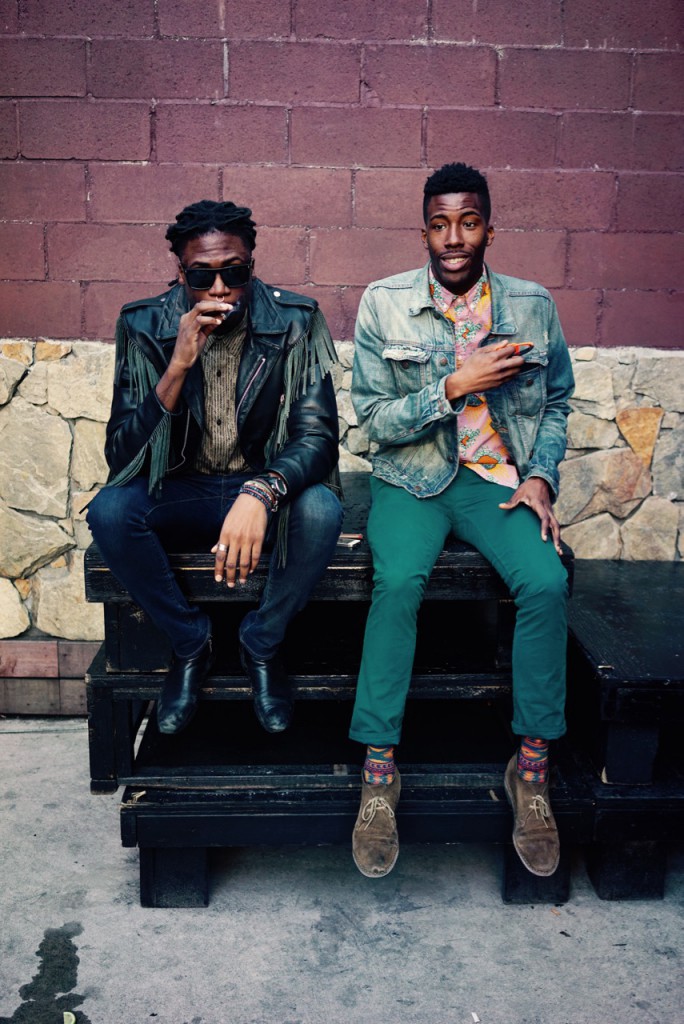
Over simplistic as the term may be, I’ve never felt the atmosphere of what I sensed was at the root of my idea of Neo-Soul quite like today, because it all boils down to a vision of intelligent, creative people getting down to good music. Just as the party is ending Célia turns up in a bowler hat, with beautiful sphinx-like eyes framed by Nefertiti style make-up, bringing an air of mischief with her. Both Hélène and I are flagging a little from all the sun and dancing and tequilas, but Célia insists we head to another bar for an after party. They have a little sisterly argument about something in French and then moments later are hugging and kissing each other goodbye. “Johny I leave you with Célia, see you tomorrow!” The way she says my name makes it sound more elegant than it has ever sounded before – “Jean-ee”.
Célia takes me to meet friends at a little Caribbean restaurant and bar just around the block called The Spur Tree Lounge. Again, there are no airs or graces, I feel as though I’ve known her for years already. Because it had been difficult to pin down the sisters together (and after the little argument) I wanted to know about the future of Les Nubians. Was it easy to keep things together as a duo? Célia rolled her eyes. “We are sisters, so there can’t not be Les Nubians. We will be old women and still be together!”
Célia introduced me to her girlfriend Brittany, and my friends Alex and Maria came to join us. After a dance we went downstairs for some jerk chicken. That is when the political hot potato was raised. Brooklyn is in a state of serious flux, and it was impossible to avoid the issue of gentrification even just walking down the street. I had spent a large amount of time writing at a great little place around the corner from my Bed-Stuy digs called Georges André Vintage Café. Can anything that calls itself ‘vintage’ ever not be part of some kind of gentrification? But I enjoyed drinking great coffee, getting fat on their homemade quiches and writing parts of the article you’re reading there.
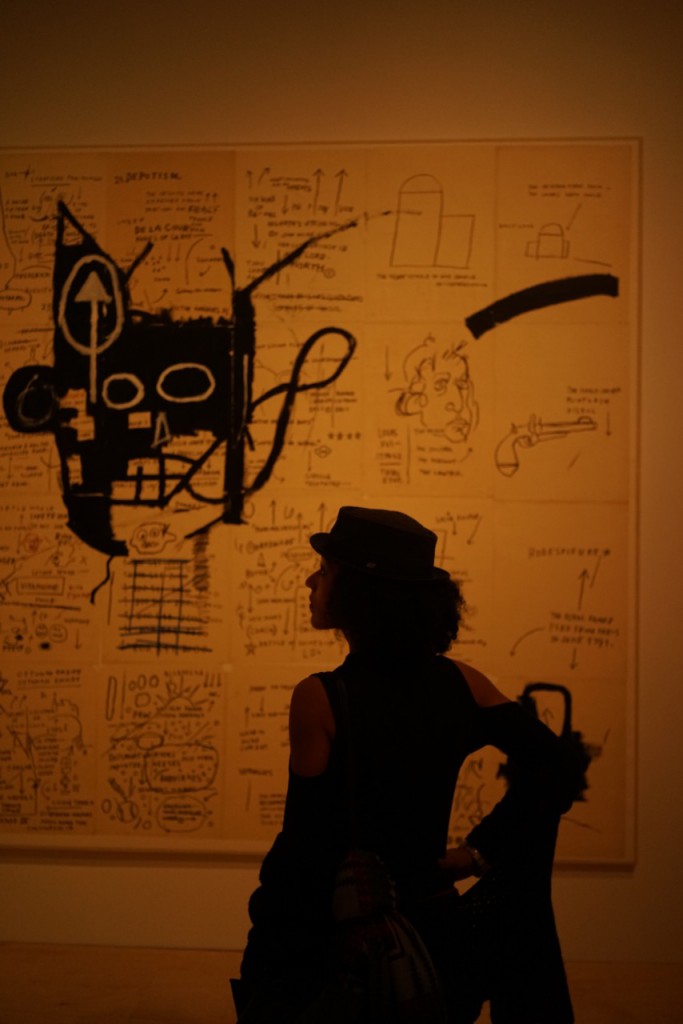
“The owner of that place is actually our friend,” said Célia. “It is a nice place with a good vibe. The problem comes when people try to take away instead of contribute to an area.” Célia mentioned a recent interview with Spike Lee, one of the loudest protagonists against the gentrification of Brooklyn. “Spike sums it up – his father has been playing his saxophone on the streets of Bed-Stuy since the ‘60s, and now the new people who have moved in have written complaint letters about the noise. I’ve been here for 8 years now and I feel really lucky to have witnessed Brooklyn when it still has a bit of its soul, because these last couple of years the change has been so dramatic – and believe me if you come back here in the next five years Brooklyn will be unrecognizable.”
My father grew up in a Brownstone on Jefferson Avenue when it was considered a ghetto and the whole family – uncles, aunts and cousins – shared the building. I looked up the estimated 2015 value of the property and it is now worth nearly $2 million dollars. For the families who bought their homes when Bed-Stuy was riddled with crime and was a no-go zone for police, that kind of money is tempting. Why not sell-up, buy a huge condo in Florida and retire in the sun by the ocean? A reason not to would be to put an end to the continuous displacement of poor African Americans at the whims and whimsies of America’s rich kids, who seem to want to buy themselves a bit of ‘African American struggle’, without actually struggling. But who am I to tell an elderly black woman who lived through the civil rights movement to keep struggling for the next generation?

It’s 5am, and we all have full bellies, tired legs and croaky throats. Célia invites me to check out the Kehinde Wiley exhibition tomorrow. “Or maybe we will check out the Bjork exhibit?” Les Nubians had given me the perfect introduction to New York, but I felt a certain sadness, or what the Portuguese might call saudade. That perhaps all the beauty I’d just witnessed was ephemeral and about to be crushed by capitalism. That my father’s African American history was about to be destroyed, and a creative black community displaced (both Helene and Célia are considering a move to Africa). There is no doubt that gentrification is a very real and harmful spectre looming over many of the poorest people in cities like New York. Poor people who, by virtue of the type of necessity that gave birth to the power of Hip-Hop, brought the colour and community that rich folks now find so attractive… so consumable.

But Brooklyn was created by the movement of black people – my grandma, like many others, took part in the great migration, from the segregated South to the North of America, and the soul of Brooklyn is in many ways the soul of the South, which is to say the soul of the descendants of slaves. We are a people who know how to survive, and against all odds, go on creating beauty under any circumstances.
The same can be said for Les Nubians. They are currently working on celebrating Africa at the Burning Man festival. Wherever they are and whatever they do, these two powerful Afropeans will stay creative, spreading and celebrating the call of the black diaspora, by any creative means necessary.
Les Nubians Recommend:
The photography of Andrew Dosumnu
The Art of Kehinde Wiley & Jean Michelle Basquiat
Brooklyn Bowl (Questlove and Les Nubians hold residencies)
The Sukyo Mahikari Organisation
To keep up to date on all the Les Nubians news please visit http://www.lesnubians.com
By Johny Pitts (A radio documentary recorded on location in Sheffield, Brooklyn and South Carolina, written and presented by Johny about his search for African American identity will be aired on BBC Radio 4 at 11.30am GMT on the 6th of October 2015. See here for more details.



